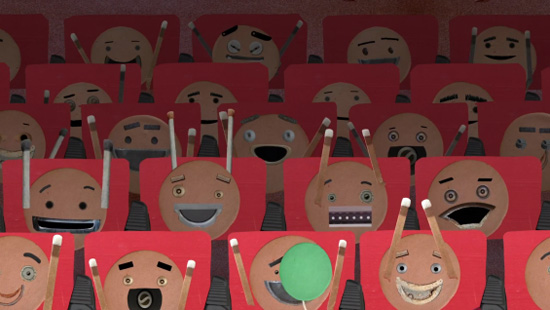In the TED-Ed lesson “Magical metals, how shape memory alloys work,” animator Andy London had a creative idea for how to bring a science lesson from Ainissa Ramirez to life — by putting faces and matchstick limbs on bologna to create walking, talking atoms. This materials science lesson teaches that, in certain metals, atoms are able to rearrange themselves like a marching band into specific formations in different states. This property has proved very useful in surgery and robotics, as well as in architecture. (Watch Doris Kim Sung’s TED Talk, “Metal that breathes.)
Below, a few questions with London about how his deli meat animation came to be.
So how did you land on using bologna as atoms in your TED-Ed lesson?
Well I went to a Family Dollar store and obsessively looked through candy–Reese’s, Smarties, Skittles, etc. Everything was too small or just didn’t work as atoms. So we went to the frozen food section and found bologna. It was big enough and plain enough!
I actually ate the bologna afterwards. Everybody got mad at me because everyone thought I’d get sick from it since it was from the dollar store.
It seems like you use a lot of different materials throughout your animations. How do you create this style?
I walk around with my iPhone, taking photos throughout the day. When I drop my son off at daycare, when I teach, when I’m walking on the street — I get texture from things like old fire alarm boxes, whatever I see. After capturing these materials, I think about setting a scene with them.
I really like to capture food. For example, I like to pitch people as pancakes and bagels — bread in particular is a simple enough shape and the texture is mild enough (as in, it’s not so busy) that it lends itself well to bodies, etc.
We’ve watched the TED-Ed lesson a few times now, and we have to ask: What are the weirdest things in it that we may not even have noticed?
Well, there’s a chicken bone somewhere in the animation. And the rocket ship in the beginning of the lesson is a telephone poll that had duct tape on it.
This post originally ran on the newly launched TED-Ed blog. Check in there for regular segments like “Meet the Educator.”
And to read more about Andy London, head to LondonSquared.net. London and his wife, Carolyn, are known for their 2004 short film “Backbrace,” that won Best Animation at the New York Television Festival and honorable mentions at the Ottawa International Animation Festival and the Woodstock Film Festival. Stay tuned for a new TED-Ed video from them in the next few weeks.

Comments (1)